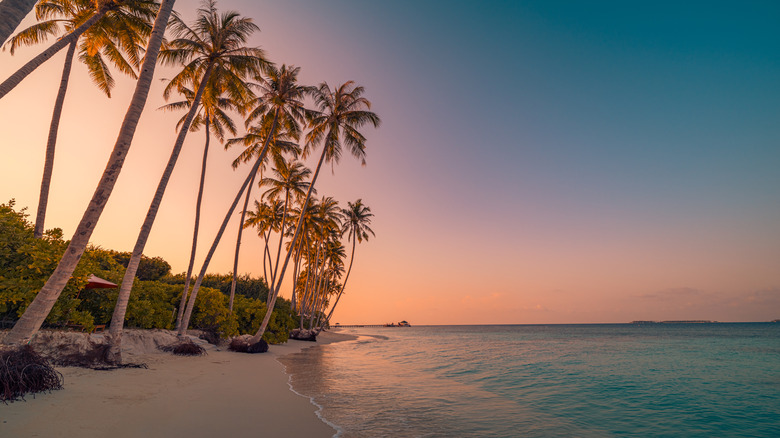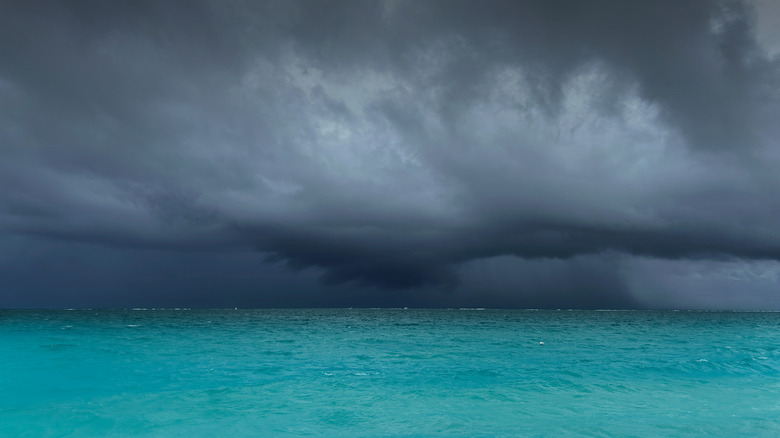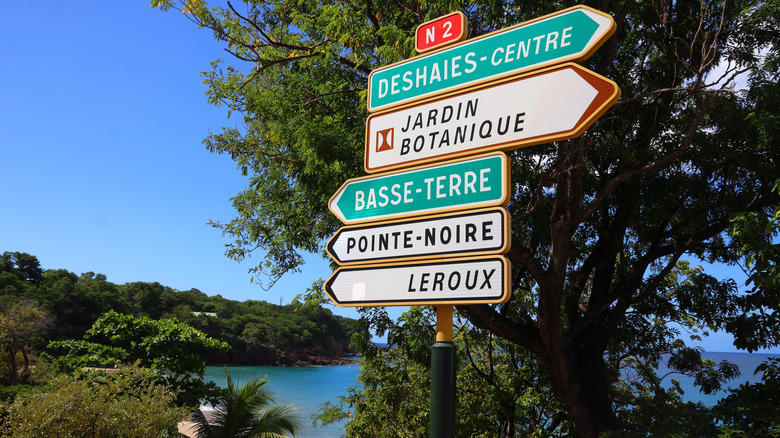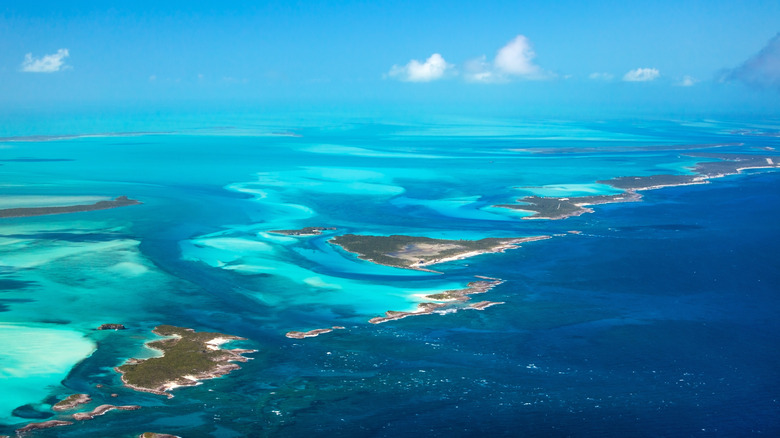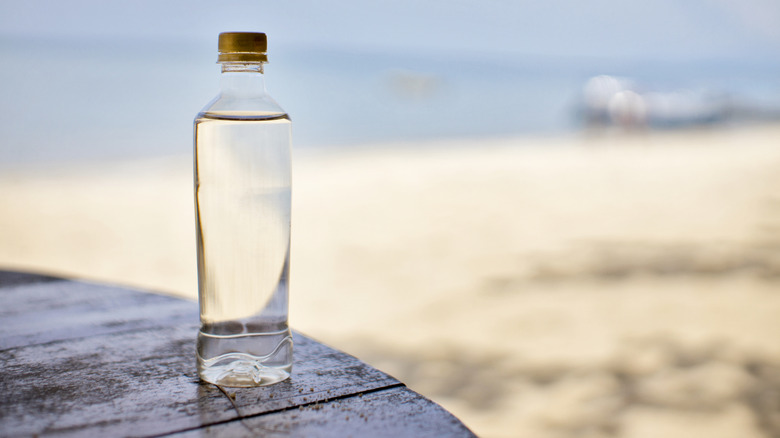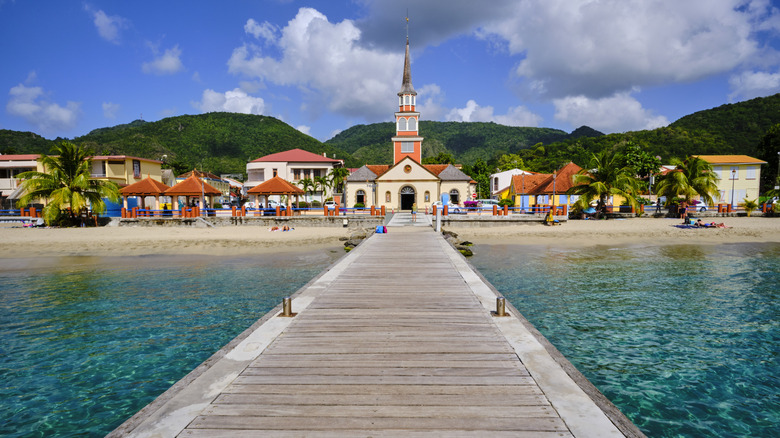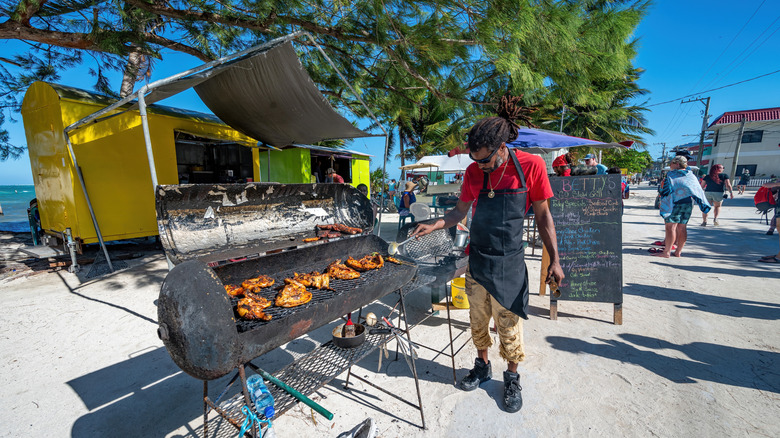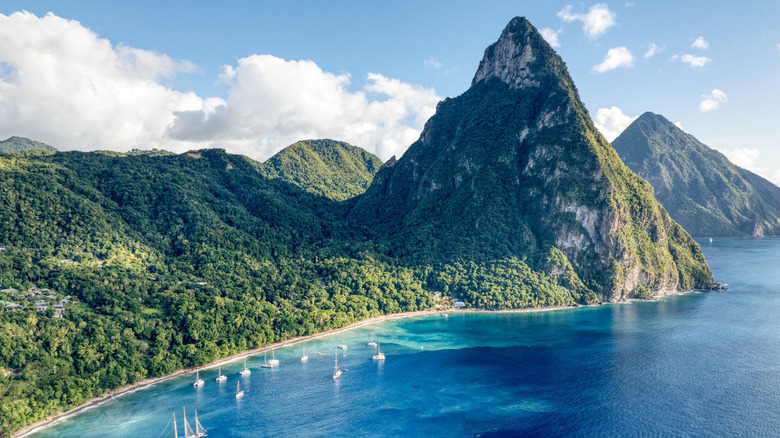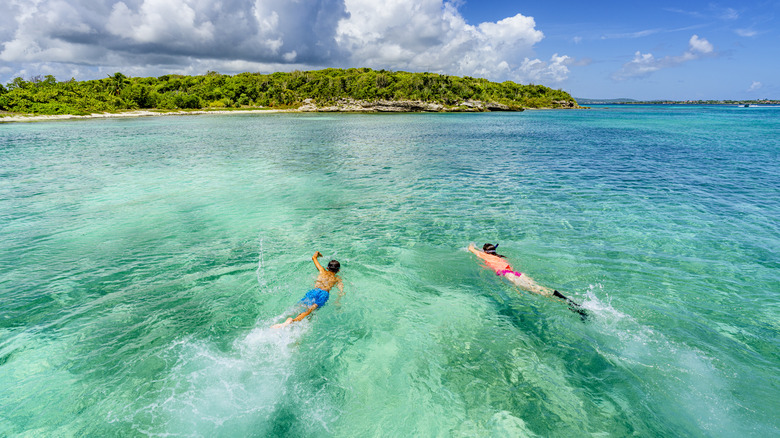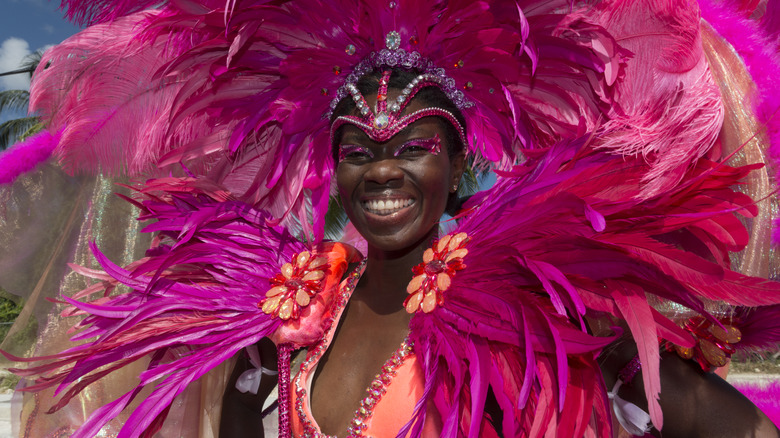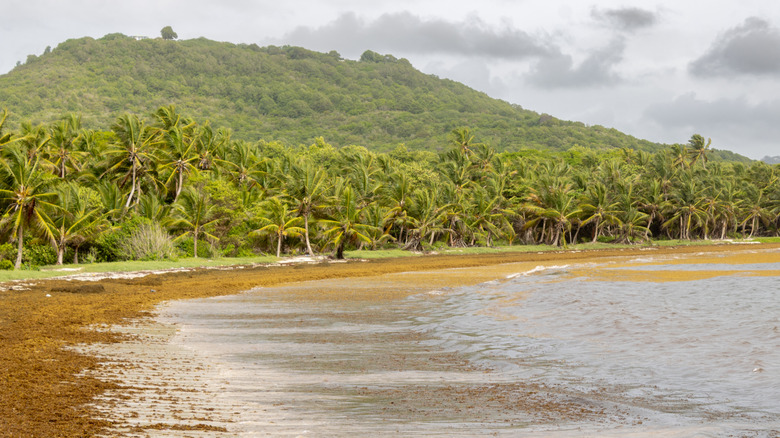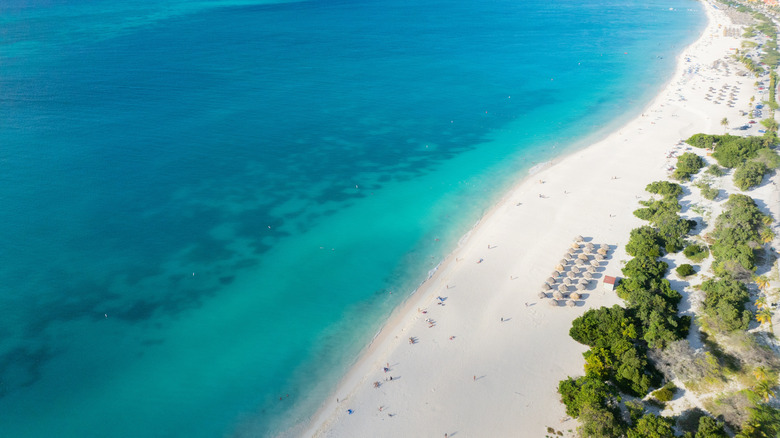Essential Advice All Tourists Should Follow Before Their Caribbean Vacation
The Caribbean conjures up daydreams of turquoise waters, powder-soft sand, and rum cocktails at sunset. But the reality of a vacation here can be more complex than the glossy brochures suggest. With more than 7,000 islands, islets, and cays scattered across the region, the Caribbean is as diverse as it is beautiful. Whether you're searching for the best all-inclusive Caribbean resorts for couples or narrowing down the safest Caribbean islands for a stress-free trip, each destination has its own culture, customs, and quirks — and that means there are plenty of things travelers should know before they go.
It's not about what to pack or which beach is prettiest. Instead, it's about the logistics, risks, and insider knowledge that experienced travelers have discovered the hard way. From understanding the realities of hurricane season to recognizing that island-hopping isn't always as simple as it looks on a map, these are the details that matter. Whether you're planning your first visit or returning for another round of sunshine and sea breezes, taking extra time to prepare can save you money, hassle, and disappointment. Most importantly, it can help you experience the Caribbean more authentically as a region of diverse traditions and communities, and not just as a postcard backdrop.
The weather isn't always picture-perfect
Yes, the Caribbean is reliably warm, but that doesn't mean it's consistently sunny. Timing really is everything here, and knowing the seasonal shifts can make a big difference to your vacation. The dry season, running from December through April, is when the weather delivers on the postcard promise: clear skies, balmy days with temperatures of 77–82 degrees Fahrenheit, and minimal rain. The catch? You'll be sharing paradise with plenty of other sun-seekers, and prices are at their peak.
From June through November, the region enters its wet season, when you can expect steamy afternoons and short but heavy showers. It's also official hurricane season, with the National Hurricane Center noting activity peaks in August, September, and October. That doesn't mean every island is equally at risk: the southern Caribbean — think Aruba, Bonaire, Curaçao, and Trinidad and Tobago — usually escapes the worst storms and stays relatively dry, while islands further north (Bahamas, Jamaica, Puerto Rico) are more exposed. If you're hoping to dodge the crowds, the shoulder months of May and early December can be a sweet spot: prices drop, beaches are quieter, and the weather often plays along. Just bring a light rain jacket, keep an eye on forecasts, and maybe invest in travel insurance that covers storm disruptions. With the right timing and a little flexibility, the Caribbean can shine no matter the season.
Not all islands are the same
It's easy to think of the Caribbean as one seamless destination, but each island has its own personality, and those differences can change the feel of your holiday entirely. Let's start with language: English is spoken in Jamaica, Barbados, and the Cayman Islands, while Spanish dominates in Puerto Rico, Cuba, and the Dominican Republic. French is official in Martinique and Guadeloupe, and you'll hear Dutch across Aruba, Curaçao, and Sint Maarten. These linguistic divides often shape everything from signage and music to local celebrations.
Infrastructure also varies dramatically. The Bahamas, with its mega-resorts and well-connected airports, feels worlds apart from quieter, less-developed islands like Dominica or Saba. On Saba, for instance, "the road that couldn't be built" — a single, winding highway — is still the island's main artery. Contrast that with the modern highways and cruise terminals of Puerto Rico, and it's clear no two islands offer the same level of accessibility. Healthcare is another consideration. Some destinations, like the Cayman Islands or Barbados, have internationally accredited hospitals, while smaller islands may rely on more basic clinics, with serious cases requiring evacuation. Even simple tasks, such as finding an ATM or catching public transport, can vary widely. For travelers, the message is clear: don't assume that what works on one island will hold true on another. A bit of research into language, infrastructure, and local services can ensure the island you choose matches the kind of trip you want.
Getting around isn't always easy
A quick glance at a map makes the Caribbean islands look tantalizingly close together, but island-hopping isn't as effortless as it looks. However, with the right planning, it can be one of the most rewarding parts of your trip. Flights between islands are limited, but hubs like San Juan in Puerto Rico, Barbados, and Trinidad make it possible to reach even the smaller, lesser-known gems like Dominica or Saba. Often, this means a scenic stopover on another island before you arrive — a bonus glimpse of the region's diversity.
Not every Caribbean journey needs a boarding pass: sometimes the best way to travel is by boat. The St. Kitts–Nevis ferry is a perfect example: the crossing from Basseterre to Charlestown takes just 25–45 minutes, skimming turquoise seas with views of both islands rising in the distance. In the British Virgin Islands, meanwhile, ferries are a part of everyday life and a fantastic way for visitors to hop between islands. Speedy's runs regular ferry services linking Virgin Gorda to Tortola, while the New Horizon Ferry Service operates scheduled sailings from Road Town out to Anegada, the most remote of the BVIs. Schedules can change with the weather, but that's part of the Caribbean pace and a good excuse to linger over an extra cocktail if your plans shift. The key is to embrace the journey, not just the destination.
Plan ahead for costs and currency
Money in the Caribbean can be more complicated than travelers expect. While U.S. dollars are widely accepted in places like the Bahamas and the U.S. Virgin Islands, many destinations use their own official currencies. The Eastern Caribbean dollar (XCD) is shared by islands including St. Lucia, Antigua, and Grenada, while destinations like Jamaica, Cuba, and the Dominican Republic all issue their own national currencies. Assumptions about dollar use can lead to confusion, and sometimes unfavorable exchange rates.
Money in the Caribbean also isn't always as straightforward as swiping a card. ATM availability can be patchy on smaller islands or in rural areas, and when you do find one, fees for foreign cards can be eye-watering. Larger hotels and resorts are usually card-friendly, but if you're hopping into a taxi, buying from a roadside fruit stall, or checking into a guesthouse, cash is still king. The smartest move? Bring a mix of payment options so you're never caught short. Costs also vary wildly from island to island. Glitzy destinations like St. Barts or the Cayman Islands come with luxury price tags, while places such as the Dominican Republic or Jamaica can be far more wallet-friendly. Even within a single island, resort zones often tack hefty markups onto meals, cocktails, and tours. Wander a few streets away and you'll usually find better value and a more authentic slice of island life. To conclude: a little planning on the money front means you'll spend less time stressing over exchange rates and more time enjoying those sunset rum punches.
Health and safety prep matters
A Caribbean holiday may feel like an escape from everyday worries, but health and safety should still be part of your planning. Some destinations require specific vaccinations, and mosquito-borne illnesses such as dengue, zika, and chikungunya are present in parts of the region. The Centers for Disease Control and Prevention advises checking health advisories before you travel and taking simple precautions to avoid bites: pack an EPA-registered repellent such as DEET or picaridin, wear long sleeves and trousers during dawn and dusk, and choose accommodation with air conditioning or screened windows — or bring a mosquito net if that's not available. Travelers with existing health conditions should consider bringing a sufficient supply of medication and packing a basic first-aid kit. Travel insurance that covers medical evacuation is strongly recommended, especially if you plan on activities like diving or hiking in remote areas.
What about tap water? Water safety isn't the same across the Caribbean, so it pays to know before you take a sip. On islands like the Bahamas and Barbados, the public water supply meets international standards and is considered safe to drink straight from the tap. Elsewhere, particularly on smaller or less developed islands, the quality can be less reliable, and the CDC advises sticking with sealed bottled water in places such as the Dominican Republic. Even ice cubes or fresh produce washed in tap water can upset sensitive stomachs if you're not used to the local supply. When in doubt, bottled or filtered water is the safer choice and a simple precaution that will help keep your holiday running smoothly.
Respect local culture and customs
While Caribbean islands are known for their warm hospitality, each has its own cultural norms that visitors should respect. Something as simple as your clothing choice can send the wrong message. On islands with strong religious traditions, such as Barbados or St. Kitts, modest attire is expected when visiting churches or public buildings. Beachwear should be reserved for the sand — not shops or restaurants. Tipping practices also differ. In some places, a service charge is automatically added to bills, while in others, a 10–15% tip is customary. Checking the bill before adding more ensures you're not double tipping.
Day-to-day etiquette can be just as important as what you wear. In many Caribbean islands, for example, it's considered rude to launch straight into a request without first offering a polite greeting, and a simple "good morning" or "good afternoon" goes a long way toward showing respect. Another common misstep is treating local communities as part of the "holiday backdrop." The Bahamas Ministry of Tourism's People-to-People program encourages travelers to step off the resort trail: visit markets, homes, villages, and meet locals in their everyday settings rather than just passing through. Being mindful in this way — whether engaging in small interactions, supporting locally owned businesses, or asking permission before taking photos — helps ensure your presence is respectful and will make your memories richer.
Food and drink are half the experience
One of the richest ways to experience the Caribbean is through its food, which reflects centuries of African, European, Indigenous, and Asian influences blending together across the islands. In Jamaica, fiery jerk chicken marinated with spices and slow-smoked over pimento wood is as much a cultural icon as it is a dish. In Trinidad and Tobago, doubles — soft bara flatbread filled with curried chickpeas — are the ultimate street-corner snack, while roti shops serve up Indian-inspired flavors that reflect the country's diverse heritage. In the Bahamas, meanwhile, conch fritters are considered a national staple and Puerto Rico boasts a 'pork highway' that is a must-visit spot for any foodies heading to the region.
Eating well here isn't just about what's on the plate, but where you find it. Resort restaurants offer polished versions of island classics, but the roadside stalls, fish fries, and small family-run eateries are where you'll often find the most memorable flavors. Sampling street food is another delicious way to experience local cuisine, but the CDC warns travelers to avoid raw vegetables and always check that cooked food is steaming hot. Many destinations also stage food festivals where visitors can sample dozens of dishes in one day. Treat mealtimes as part of your itinerary, and the Caribbean opens up as far more than just a beach escape: it becomes a journey through history and culture.
Venture beyond the beaches
The Caribbean may be synonymous with gorgeous white-sand beaches loved by travelers, but look closer and you'll find a region packed with natural wonders and cultural treasures that go far beyond the shoreline. The islands collectively boast more than 20 UNESCO World Heritage Sites, including dozens of protected reserves and biospheres that spotlight their extraordinary biodiversity. These are the places where travelers can swap a hammock for hiking boots and discover a different side of paradise. In Dominica, the Boiling Lake trek cuts through steaming volcanic valleys and lush rainforest before reaching a surreal, bubbling crater lake at the heart of Morne Trois Pitons National Park. Over in Saint Lucia, the dramatic twin peaks of the Pitons rise straight out of the sea (pictured), and a hike to the top will undoubtedly be a highlight of any trip here.
History buffs are equally rewarded. In San Juan, Puerto Rico, the cobbled streets and massive fortifications of the old city — part of the UNESCO-listed La Fortaleza and San Juan National Historic Site — reveal centuries of colonial influence. Meanwhile, Brimstone Hill Fortress in St. Kitts, dubbed the "Gibraltar of the West Indies," showcases 17th-century military engineering and provides sweeping views across the island. For those keen to explore responsibly, local tourism boards usually include a list of reputable companies you can book with. Whether it's diving into Bonaire's marine parks, listening to steel pan music in Trinidad, or joining a cultural walking tour, the Caribbean proves it's far more than just a beach escape: it's a living museum of history, nature, and culture.
Support sustainability while you travel
With fragile coral reefs, endangered species, and limited natural resources, the Caribbean region is extremely vulnerable to the impacts of tourism. While there is a wealth of well-known and rightfully beloved gems and alluring tourist destinations, making thoughtful choices can go a long way. Start with sunscreen: many chemical formulas contain oxybenzone and octinoxate, which damage coral reefs. Opting for 'reef safe' zinc oxide or titanium dioxide sunscreen helps preserve marine ecosystems for future generations. Supporting local businesses makes a difference too — if you can, choosing guesthouses, family-owned restaurants, and community-led tours over international chains keeps money within the local economy (while also giving you a more authentic experience).
Eco-conscious activities are increasingly part of the Caribbean travel experience, giving visitors the chance to enjoy nature while supporting its protection. In Barbados, the Barbados Sea Turtle Project invites travelers to witness nesting or join hatchling releases, directly aiding conservation. Over in Belize, guided snorkeling trips in marine reserves like Hol Chan let you explore thriving reefs managed for sustainability. The Dominican Republic offers sustainable and respectful whale-watching excursions in Samaná Bay, while in Grenada, eco-tours through mangroves highlight their role in storm protection and biodiversity. Choosing these experiences not only creates memorable adventures but also helps preserve fragile ecosystems so the Caribbean stays as beautiful as it looks in the postcards.
Festivals can transform your trip
The Caribbean isn't just about sun and sea — it's one of the world's great festival destinations, with celebrations that showcase the region's music, dance, history, and cultures. From dazzling street parades to intimate music events, nearly every island has its own signature party. The most famous is Carnival, celebrated across many islands as a weeks-long explosion of color, costumes, and calypso; in Trinidad and Tobago, it's hailed as the "greatest show on Earth," drawing visitors from around the globe.
Other islands add their own flair: Barbados throws Crop Over, a harvest festival dating back to the 18th century, while the Bahamas lights up at Christmas and New Year with Junkanoo, where African traditions meet Caribbean creativity in flamboyant street parades. Music festivals also pack the calendar, from reggae and soca to world-class jazz, often set against tropical backdrops that make every performance unforgettable. Of course, timing your trip around a festival takes planning. Hotels fill up fast and prices rise, so booking early is essential. Even if you're not traveling specifically for a festival, checking the events calendar before you go is wise — stumbling upon a local celebration could turn into the highlight of your holiday.
Expect the unexpected
Even the best-planned Caribbean holiday can come with surprises. Power outages, internet blackouts, and sudden ferry cancellations are not uncommon, particularly on the smaller islands. Tropical rains may drench an outdoor excursion, while swarms of mosquitoes or sandflies can test even the most relaxed traveler's patience. Some challenges are seasonal: sargassum seaweed (pictured), for instance, has become a recurring issue on beaches across the region, especially from spring through summer. While it doesn't affect every island, it can be disappointing for beachgoers unaware of its arrival.
Connectivity is another consideration. Wi-Fi may be slow or patchy outside major resorts, and travelers note in online forums like Reddit that mobile data can be very expensive depending on your carrier. Those who need reliable connections for work should check coverage maps or consider international SIM cards. The best way to handle the unexpected? Flexibility. Build extra time into your itinerary, carry a portable charger, and keep backup entertainment for rainy afternoons. By embracing the slower pace and quirks of island life, you may even find the surprises become part of the adventure.
Methodology
The Caribbean offers endless travel possibilities, but not every detail is equally important for first-time visitors. For this guide, I focused on the factors most likely to shape someone's holiday: costs, safety, logistics, cultural respect, and sustainability. Each slide highlights issues that, if overlooked, could cause frustration, unexpected expenses, or missed opportunities. To build this advice, I drew from a mix of authoritative sources, including government travel advisories, regional tourism boards, and respected travel outlets.
Health and safety information was cross-referenced with up-to-date reports from organizations like the CDC and the U.S. State Department to ensure accuracy and reliability. I also consulted regional resources — from official tourism boards in Dominica, Barbados, and Puerto Rico to conservation organizations focused on reef and wildlife protection — to capture the nuances of island-specific conditions. Equally important is the perspective of personal travel experience. Having visited several Caribbean islands myself, I've seen how advice on paper plays out in practice, from navigating local transport to understanding unspoken etiquette. That firsthand knowledge helps separate what's truly essential from what's just nice to know. By combining expert data with on-the-ground insights, this methodology aims to give readers practical, trustworthy guidance.
